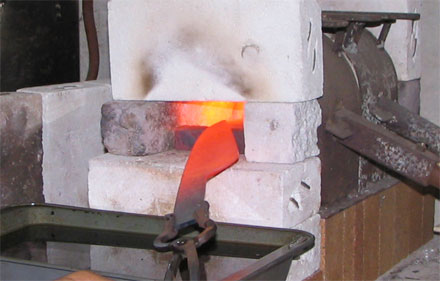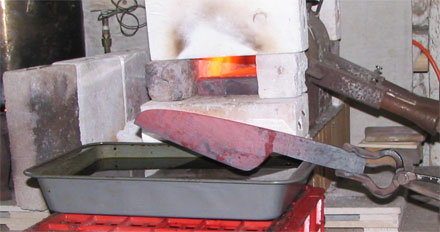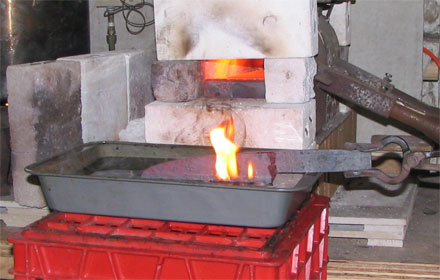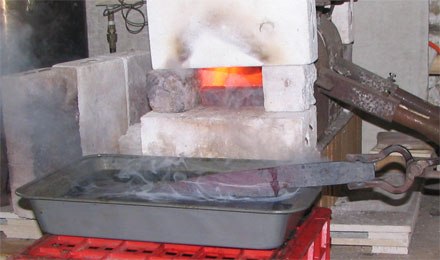Hardening a Cutlery Knife
Hardening, shown on this page, is the first step.




Hardening a Cutlery Knife | |
| Heat treating is a two step process - hardening and tempering. Hardening, shown on this page, is the first step. | |
 |
The blade is heated to just the right temperature, we call cherry red. It is important to be at the right temperature, about 1450 F. Grain growth occurs at higher temperatures. But if it isn't hot enough the steel won't harden when cooled in the oil. |
 |
In a quick motion, the blade is brought out of the forge and just the edge is plunged into a tray of oil. |
 |
Sometimes there are lots of flames until the steel cools. I've startled quite a few people, when I forget to warn them. |
 |
The large amount of smoke is pulled away with a fan in the doorway off to the left. It takes a surprisingly long time for the steel to cool to at least less than 200 degrees F. One reason is that the back of the blade, where it is thickest, holds a lot of heat and is not getting cooled by the oil. |
| In the picture below, the quench line can be seen on the blade. The scale has fallen off the blade where it was quenched in the oil. The blade is now very hard from the edge up to the quench line. It is also very brittle because it is in a very stressed condition. Those stressed will be relieved to a well controlled degree by the second step in heat treating, tempering. The blade will be carefully heated to about 420 F and held there for several hours. This is where the tempering colors come from. |
 |